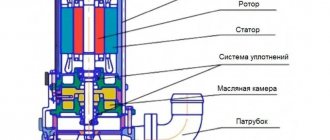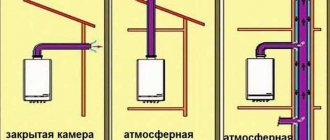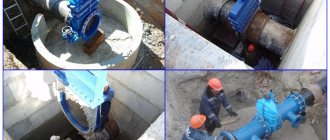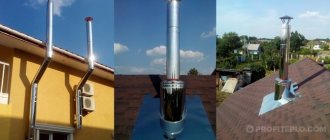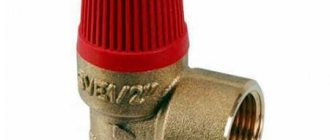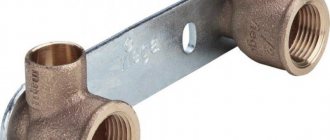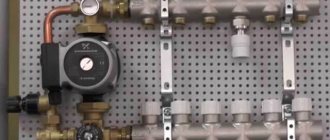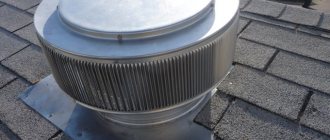A necessary element of any serious kitchen is an exhaust hood. Such a device is required to be installed in industrial enterprises, but it also has a worthy place in domestic kitchens.
This hood option is exceptionally effective at removing cooking-related contaminants from the air. Let's take a look together at the operating features of this exhaust hood and the points that you need to pay attention to when choosing a hood for your kitchen.
What is it and how does it work?
Any air purifiers or humidifiers will not cope with the soot generated during cooking. Above a gas or electric stove you need a powerful hood with a dome, the dimensions of which exceed the area of the cooking surface. This role is played by an umbrella. The device does not occupy useful kitchen space, being in a suspended state.
Exhaust domes are installed above household stoves, in food industry workshops, and chemical laboratories. Umbrellas are used wherever there is a risk of air pollution with harmful impurities. Install hoods above a source of high humidity and temperature.
There are many types of umbrellas, but the design and installation features of each model are similar. Let's start our review of the engineering structure with the device.
The basis of the device is a metal casing - the vault. There is a hole in the center through which dirty air is sucked in. The role of the chimney is played by the ventilation duct. The outlet of the device is connected to the channel by a metal air duct.
Depending on the model, the exhaust device is equipped with the following elements:
- For forced exhaust of contaminated vapors, an electric fan is installed in the ventilation hole of the dome. The presence of turbines is typical for all modern hoods.
- Filter for catching fat impurities.
- Spark arrestor. Exhaust products installed above an open fire source are equipped with mesh.
- Backlight. For ease of work, lamps are mounted inside the dome.
- Mounting fastening elements.
The umbrella works on the principle of forced ventilation. Dirty air collects under the dome. A rotating turbine sucks it in and discharges it through an air duct to the street. The filter system traps impurities of fats and soot, preventing them from accumulating on the fan blades.
Design Features
Grease filter. Serves to clean exhaust air masses from fat particles and oil droplets. It is installed to protect ventilation communications from greasy deposits, deterioration of channel throughput, and physical and mechanical characteristics. The efficiency of the grease trap reaches 80%. An air filter with a fat cassette installed in the air duct in front of the exhaust fan will allow you to intercept the remaining 20%. The grease trap is a tire connected to a rectangular frame. The space inside is evenly covered by lamellas, forming something like a labyrinth. Such a filter rests against the edge of the tray, and the other side rests on a special bar at the top of the umbrella.
Types of umbrellas
According to the principle of operation, devices are divided into two groups:
- Exhaust models have only one function, aimed at removing dirty air from the room.
- Supply and exhaust models perform two functions: they remove dirty vaporous masses, and also provide an influx of clean air from the street.
Hoods that provide air conditioning are installed indoors where the flow of oxygen is limited. The amount of supplied fresh air is one third less than the intake of dirty air masses.
Exhaust devices are divided into three groups according to the type of design:
- A special feature of wall-mounted hoods is the presence of one row of filters that trap grease. The dome is attached to the wall above the hob or other equipment.
- Island-type models are equipped with two rows of filters. High-performance hoods are suspended from the ceiling by cables or chains. Domes are placed over free-standing devices of large dimensions in any part of the room. Rectangular models can be hung against the wall.
- Transition umbrellas are installed over an open source of fire. In everyday life they are hung over barbecues. The dome must be equipped with a spark-extinguishing mesh.
All models of umbrellas have a cross-sectional shape of a trapezoid, rectangle or triangle. Depending on their purpose, hoods can be used for domestic or industrial use.
Industrial
Umbrellas for industrial ventilation systems are distinguished by their large dimensions and the presence of a powerful fan. The filter set is equipped with special catchers. The settled impurities of fat flow from them into the glass.
Periodically, the container requires cleaning, followed by rinsing with detergent.
Household
Hoods for domestic use are equipped with disposable filters made of paper or fiber. Umbrellas are usually produced as a wall-mounted type, since in the kitchen the stove is most often located against the wall.
The devices are equipped with a less powerful fan, and the dimensions are designed to fit the hob area of a household stove.
Grease traps
Grease traps are considered one of the most important components of a kitchen hood system. They are a kind of barrier between the stove and the air duct, allowing air to pass into the system, but preventing burning and grease particles from entering. This allows you to extend the service life of the ventilation system, and also eliminate the need for constant cleaning, since up to a liter of grease can accumulate on the walls of the air ducts over the course of a year. According to their purpose, there are two types of grease traps:
- household;
- industrial.
Let's look at each type in more detail.
Household grease traps
A household grease trap is used in home kitchens and is installed above the stove. Its operation helps prevent frequent cleaning of the exhaust hood. Of course, the home hood element is not as functional and effective as its counterpart in the kitchens of canteens, restaurants and cafes, but its performance characteristics are quite sufficient for private use. It also differs from a professional product:
- size;
- material.
The dimensions of household grease traps are smaller than industrial ones. As for the material, they are equipped with a fabric or paper mesh. On the one hand, such a filter cannot be washed, on the other hand, it is quite cheap and can be replaced, if necessary, with a new component. Some models are equipped with a metal mesh that can be easily cleaned by immersing it in a container of detergent.
Industrial grease traps
Grease traps for public kitchens are professional products installed in galvanized or stainless steel exhaust hoods. Such filters cannot be made with your own hands, but you can buy them in Moscow at an affordable price in our online store. Their use is mandatory, since public kitchens are filled with waste gases that must be quickly removed through the air duct. In this case, fat particles can clog it; to prevent clogging, a grease trap is installed. Such elements can be manufactured in:
- three-layer version;
- five-layer design.
The first type is characterized by a thickness of 20 millimeters, the second - 25 mm. The material for industrial grease traps is also stainless steel or zinc coated steel. This material is protected from the effects of gases, aggressive detergents and the harmful effects of moisture.
Types
According to the type of installation, ventilation elements are divided into built-in, flat, and dome structures.
Built-in
Built-in devices are characterized by quiet operation. Install the hood directly above the hob. Operation is carried out in air circulation and exhaust mode.
Flat
Flat-type exhaust devices are characterized by their efficiency and the absence of an outlet pipe for connection to the air duct.
Air purification occurs due to circulation through the filter. The disadvantage of this model is its noisy operation, as well as the need for frequent filter replacement.
Dome
Dome-type models are available as wall-mounted and island-mounted. The work is carried out in air exhaust and circulation mode. Hoods have high performance, are mounted on the wall or suspended from the ceiling.
What are umbrellas made of?
Not only fats, but also steam, chemicals, and other aggressive components that cause corrosion settle on the internal surfaces of the dome. Additionally, there is a destructive effect of high temperatures. Only metal can withstand such conditions.
Industrial, as well as expensive household models are made of stainless steel.
The metal is considered heat-resistant, resistant to corrosion and acids. Cheap household appliances are made from galvanized or ordinary sheet metal, followed by painting. There are aluminum products.
How to choose an umbrella
To choose the right umbrella, three important factors are taken into account:
- The shape of the ventilation product is selected taking into account the parameters of the room, the dimensions of the slab, as well as its location. They think about the optimal method of fastening, which is influenced by the height of the ceilings.
- Size is one of the important parameters affecting the degree of indoor air purification. The dimensions of the exhaust device must be at least 10 cm larger than the dimensions of the hob. If the stove is not located near the wall, the umbrella reach is increased to 20 cm.
- The main parameter responsible for operational efficiency is productivity. To select a product with optimal air flow, take into account the height and length of the umbrella, as well as the cross-section of the filters. When comparing hoods of the same size, the performance will be higher for the product with a larger dome height.
When choosing an umbrella, pay attention to the diameter and number of connected air ducts. For household models, one output is sufficient. Four air ducts are connected to hoods with a length of 160 cm: two for exhaust and two for supply.
How to calculate power
Hoods must replace air ten times. In production, complex formulas are used to calculate power. Household models in the kitchen are not capable of changing the air ten times. Calculation of the power of the umbrella is carried out according to the parameters of the stove.
For example, there is a gas stove with four burners. Data is taken from the technical data sheet of the device. You need to find out the power of each burner and add up all the values. Let's say we get an example: 1.9+1.9+1.0+3.5=8.3 kW. The result indicates the heating output of the gas stove. It can be assumed that a maximum of three burners will be working constantly, but it is undesirable to make a smaller reserve. The thermal power parameters of the stove and hood are the same, which means that an umbrella rated at 8.3 kW is required.
DIY installation
Installing an umbrella yourself can be done in four ways, depending on the design of the product:
- wall-mounted models are attached to the wall using anchors, through technological holes on the umbrella body;
- wall-mounted and island models can be fixed to the ceiling using a pin and collet;
- island and rectangular wall models are fixed to the ceiling with chains or cables, having previously installed an anchor;
- installation on a support frame involves the manufacture of a metal structure securely fixed above the hob.
The fourth installation method is considered the most difficult. The frame is welded to the shape of an umbrella. The structure is installed on support legs with mounting plates welded to the bottom and fixed to the floor with anchors.
Manufacturing process
Now you need to secure the product to the pipe using two methods:
- Constructing a wire frame on a metal pipe.
- Implanting ordinary nails into the brickwork of a chimney pipe.
If you wish, you can decorate homemade pipe caps; here the master’s imagination has no limits. The simplest way is to beautifully design the edges of the chimney: using the wavy trimming method or using cuts and folding of the petals.
Thus, by taking the time to make an umbrella, you can extend the service life of the chimney pipe and give the roof a finished look.
Cooking meat, fish and vegetables on the grill is a traditional, pleasant, festive affair, but it has its drawbacks. The process is sometimes interrupted by bad weather, and the smoke wafting through the yard creates some discomfort for those around. To make grilling barbecue a pleasure, use a barbecue umbrella. The element is installed above the firebox and serves as a smoke exhaust.
At what height to mount
The quality of air exchange depends on the height of the umbrella installation above the hob. The parameters are displayed in the umbrella instructions. Typically, household models are removed from a gas stove to a height of 80 cm, and from an electric stove - at least 60 cm.
Now you know all the basic information about exhaust hoods and can make the right choice and installation yourself. Subscribe to other useful articles and share links on social networks with your friends who are looking for simple ways to solve complex problems.
(
1 ratings, average: 3.00 out of 5)
Conclusion
Exhaust hoods are widely used in everyday life and the food industry, as they provide high-quality removal of polluted air. In addition, the instructions for their operation and maintenance are extremely simple. The main thing is to choose the right device for each individual case, especially for industrial devices.
The video in this article can provide some additional information on this topic.
Did you like the article? Subscribe to our Yandex.Zen channel
